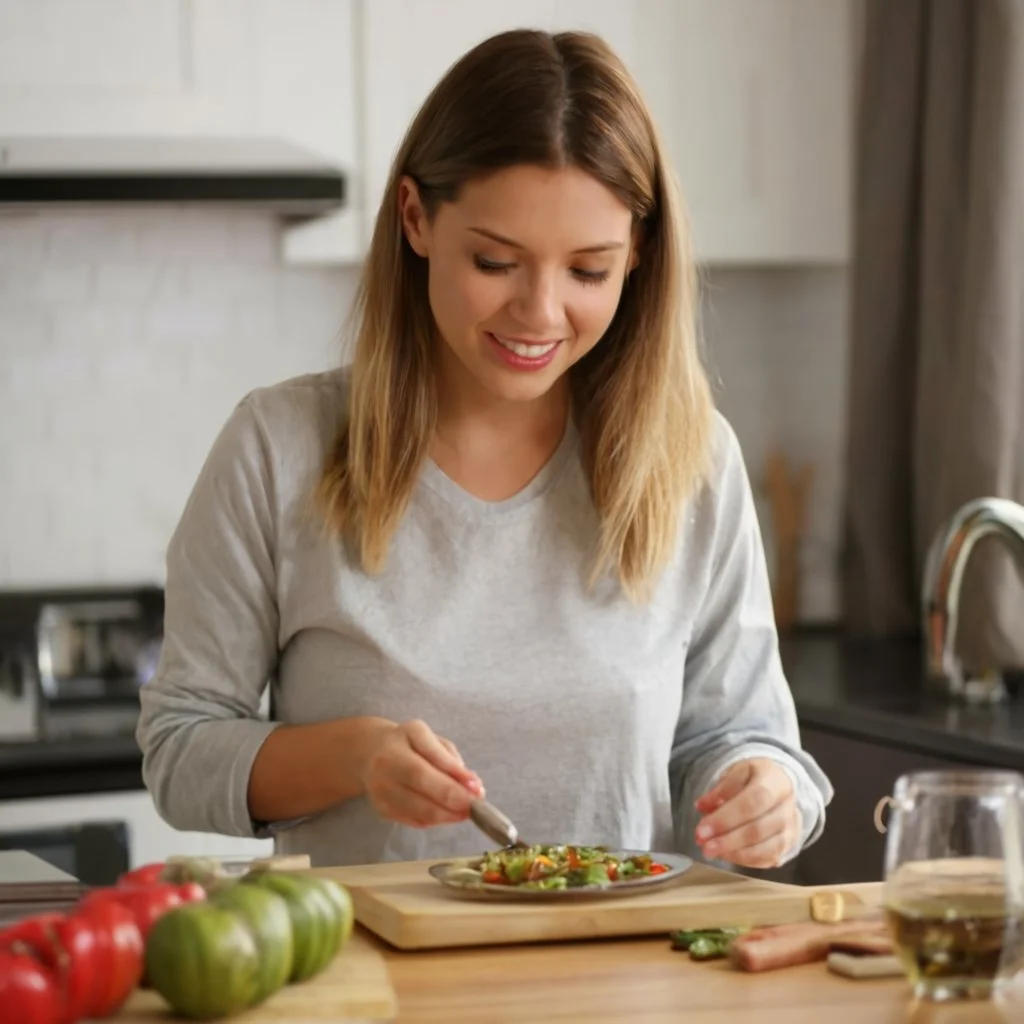The Dutch oven, a timeless kitchen staple, has been a cornerstone in culinary history for centuries. Its ability to transform simple ingredients into culinary masterpieces makes it an ideal choice for a variety of dishes, especially desserts. The unique heat distribution and flavor enhancement properties of a Dutch oven ensure that desserts are not only cooked evenly but are also rich in taste and texture.
Historical Significance of Dutch Ovens
Originating in the Netherlands in the 17th century, Dutch ovens were quickly adopted by American colonists. These durable pots symbolized resourcefulness and adaptability, essential qualities in early American kitchens. Today, they continue to be celebrated for their versatility and are used in both professional and home kitchens worldwide. To understand more about their history, check out this detailed article on the History of Dutch Ovens.
Top 5 Dutch Oven Dessert Recipes
Dutch oven desserts are a testament to the pot’s versatility. Here are ten mouthwatering recipes that showcase its capabilities:
1. Dutch Oven Chocolate Lava Cake:
- This indulgent dessert features a rich, gooey chocolate center that oozes out with every spoonful. Perfect for chocolate lovers, it combines simple ingredients like cocoa powder, chocolate chips, and a dash of vanilla. Check out the recipe HERE.
2. Classic Dutch Oven Apple Crisp:
- A timeless favorite, this recipe layers thinly sliced apples under a crisp, buttery oat topping. Sprinkle cinnamon and nutmeg for a warm, spiced flavor, making it an ideal treat for cozy evenings. Check out the recipe HERE.
3. Dutch Oven Berry Cobbler:
- Mix your favorite berries – blueberries, strawberries, or raspberries – with sugar and lemon juice, then top with a simple biscuit dough. The result is a vibrant, juicy dessert with a golden-brown crust. Check out the recipe HERE.
4. Peach Cobbler in a Dutch Oven:
- Combine fresh or canned peaches with sugar and a touch of cinnamon, then cover with a layer of soft, fluffy dough. This dessert is a delightful blend of sweet, tangy flavors and soft, cakey textures. Check out the recipe HERE.
5. Dutch Oven Cinnamon Rolls:
- Prepare a batch of cinnamon roll dough, roll it out, and spread it with a generous helping of butter, cinnamon, and brown sugar. Bake in the Dutch oven until they turn golden brown and top with a simple icing glaze. Check out the recipe HERE.
Each of these Dutch oven dessert recipes offers a unique and delightful way to end a meal, showcasing the versatility and convenience of cooking with a Dutch oven.
Once you’ve mastered your Dutch oven dessert, why not elevate it with a delicious topping? Our Perfect Strawberry Cream Cheese Frosting is a delightful complement to any sweet treat, adding a burst of fruity flavor and creamy texture.
Recipe Highlights and Tips
Each of these recipes brings something unique to the table. From the ease of making a Chocolate Dump Cake to the intricate flavors of a Cola Chocolate Cherry Cake, there’s something for every palate. The key to perfect Dutch oven desserts lies in temperature control and timing. Experimenting with these recipes will not only broaden your dessert repertoire but also enhance your overall baking skills.
Why Dutch Ovens are Ideal for Desserts
Dutch ovens are exceptionally well-suited for making desserts for several compelling reasons:
Even Heat Distribution:
One of the key features of a Dutch oven is its ability to distribute heat evenly. This is crucial for baking and cooking desserts, as it ensures that they cook uniformly. Whether you’re making a cake, cobbler, or crisp, the consistent heat helps prevent hot spots and burning, resulting in perfectly cooked desserts every time.
Versatility:
Dutch ovens can be used both on the stovetop and in an oven, making them incredibly versatile. This flexibility allows you to prepare a wide range of desserts, from stovetop puddings and compotes to baked cakes and bread puddings.
Heat Retention:
The heavy construction of Dutch ovens allows them to retain heat very well. This is particularly beneficial for desserts that need to continue cooking even after the heat source has been turned off, such as custards or certain types of cakes.
Moisture Retention:
The tight-fitting lids of Dutch ovens trap steam and prevent moisture from escaping. This is ideal for baking moist desserts like brownies or lava cakes, as it ensures they don’t dry out during the cooking process.
Depth and Size:
Dutch ovens come in various sizes and have deep sides, making them perfect for making large batches of desserts or layered dishes like trifles and deep-dish cobblers.
Flavor Enhancement:
The sealed environment of a Dutch oven helps concentrate flavors, making desserts taste richer and more intense. This is especially true for fruit-based desserts, where the natural sugars caramelize beautifully, enhancing the overall flavor.
Durability:
Dutch ovens are known for their durability. They can withstand high temperatures and rough handling, making them ideal for outdoor cooking scenarios like camping, where they can be used over open fires.
Aesthetic Appeal:
Lastly, Dutch ovens have a rustic, charming look that makes them great for serving. A dessert presented in a Dutch oven can go straight from the oven to the table, adding an element of homely elegance to the dining experience.
In summary, the Dutch oven’s even heat distribution, versatility, heat and moisture retention, size, flavor enhancement capabilities, durability, and aesthetic appeal make it an ideal cookware choice for a wide variety of desserts.
For those interested in exploring the versatility of Dutch ovens in dessert making, The Spruce Eats offers excellent tips on how to make the most of this kitchen essential.
Choosing the Right Dutch Oven for Desserts
When selecting the right Dutch oven for desserts, the material and size are paramount considerations. Cast iron Dutch ovens are renowned for their superior heat retention and even distribution, qualities essential for consistent baking results. They are ideal for recipes that require a steady temperature, making them perfect for cakes, cobblers, and crisps. However, they do require regular seasoning to maintain a non-stick surface and prevent rusting. On the other hand, enameled cast iron Dutch ovens offer a non-reactive surface, meaning you can cook acidic ingredients without worrying about them reacting with the metal. This type of Dutch oven is also easier to clean and maintain, although it can be more expensive. The choice between traditional cast iron and enameled cast iron ultimately depends on your personal preferences, budget, and the types of desserts you plan to make.
The size and shape of the Dutch oven are also crucial. A 5 to 6-quart Dutch oven is generally versatile enough for most dessert recipes, providing ample space for a variety of dishes while ensuring even cooking. Round Dutch ovens are preferred for their ability to circulate heat more effectively, which is particularly beneficial for baking. Additionally, consider the depth of the Dutch oven, especially for recipes that might bubble or expand. A deeper pot can handle these changes more effectively, reducing the risk of spills. Lastly, pay attention to the lid design – a tight-fitting lid is essential for retaining moisture and heat, key factors in achieving perfect dessert textures. With these considerations in mind, choosing the right Dutch oven can elevate your dessert-making experience, ensuring delicious outcomes every time.
Maintenance and Care for Dutch Ovens
Proper care extends the life of a Dutch oven. Regular seasoning (for cast iron varieties), gentle cleaning, and correct storage practices are essential. This ensures that your Dutch oven remains in top condition, ready for your next baking adventure.
Frequently Asked Questions
What makes Dutch ovens ideal for desserts?
Dutch ovens are ideal for desserts due to their excellent heat retention and distribution. The thick walls and tight-fitting lids of Dutch ovens create a consistent cooking environment, similar to an oven, which is essential for evenly baked desserts. This even heat helps prevent hot spots and burning, ensuring desserts cook uniformly. Additionally, the ability to use them both on the stovetop and in the oven adds versatility, making them suitable for a wide range of dessert recipes.
Can I bake any dessert in a Dutch oven?
While Dutch ovens are incredibly versatile, not every dessert is ideally suited for them. Desserts that require very precise temperature control or those that are extremely delicate, like certain soufflés or meringues, might not fare as well in a Dutch oven. However, most cakes, cobblers, crisps, bread puddings, and brownies can be successfully baked in a Dutch oven. It’s always a good idea to consider the specific requirements of the dessert before deciding to use a Dutch oven.
How do I adjust cooking times for desserts in a Dutch oven?
Adjusting cooking times for desserts in a Dutch oven depends on a few factors, including the recipe, the size and material of the Dutch oven, and whether you’re cooking on a stovetop or in an oven. Generally, you might need to reduce the temperature slightly compared to a standard oven recipe, as Dutch ovens retain heat well. It’s important to check the dessert periodically, especially the first time you try a new recipe, to avoid overcooking. Using a thermometer to check the internal temperature of cakes or bread can be helpful.
What’s the best way to clean and maintain a Dutch oven?
For cast iron Dutch ovens, clean them while they are still warm using hot water and a brush or sponge; avoid using soap as it can strip the seasoning. Dry them thoroughly after washing to prevent rust. If needed, re-season by coating with a thin layer of oil and heating it in the oven. For enameled Dutch ovens, you can use mild dish soap and water. Avoid using abrasive sponges or cleaners, as they can damage the enamel. With proper care, a Dutch oven can last for many years.
Are there any Dutch oven dessert recipes for dietary restrictions?
Yes, there are many Dutch oven dessert recipes that cater to various dietary restrictions. For example, you can find gluten-free cobblers and crisps, vegan cakes, and sugar-free fruit desserts. Many traditional recipes can be modified with alternative ingredients to suit dietary needs, such as using gluten-free flour blends, plant-based milks, or natural sweeteners. The key is to experiment with substitutions and adjust cooking times as needed to accommodate these changes.
In conclusion, Dutch oven desserts offer a unique blend of tradition, versatility, and flavor. Whether you’re a seasoned baker or a curious cook, the Dutch oven is a tool that promises to elevate your dessert game. Embrace the art of Dutch oven baking and let your culinary creativity flourish!
If you’re a fan of rich and fudgy brownies, you’ll love this twist on the classic recipe. Check out our guide on making Condensed Milk Brownies, a decadent delight that can easily be adapted for your Dutch oven.


